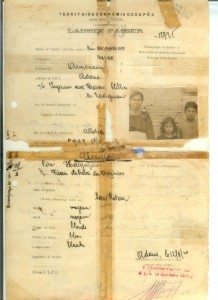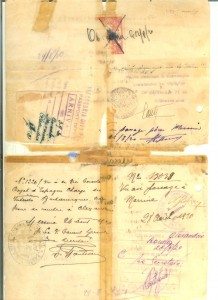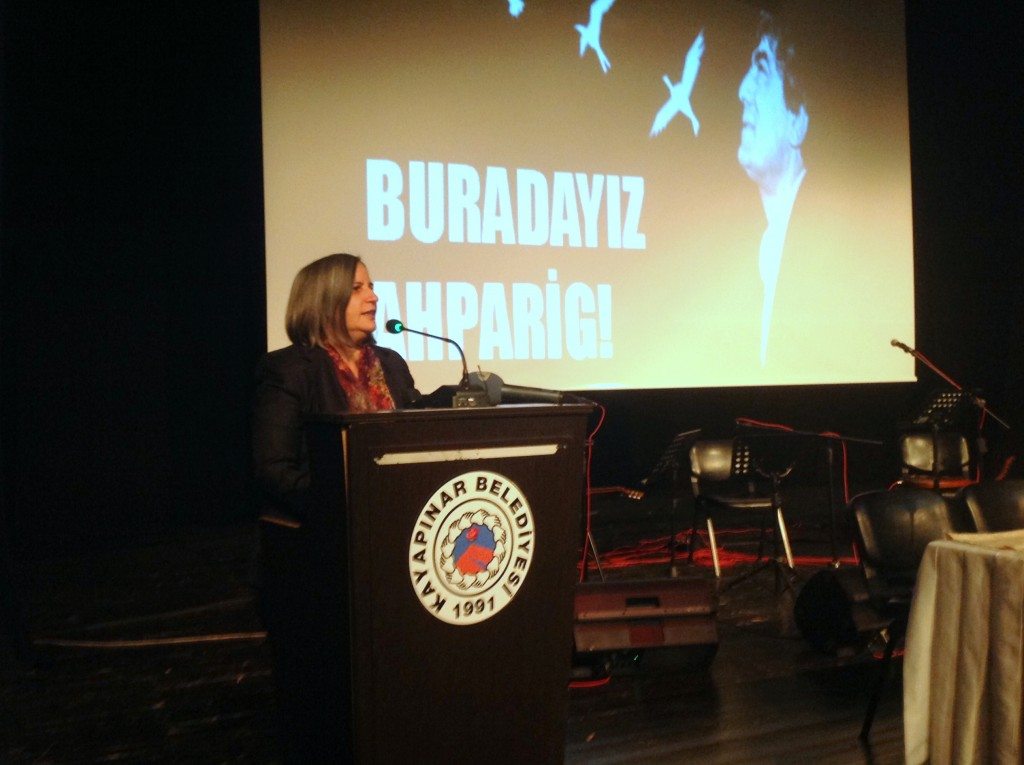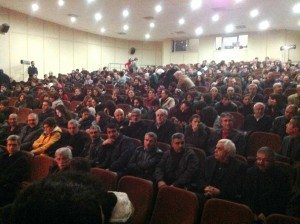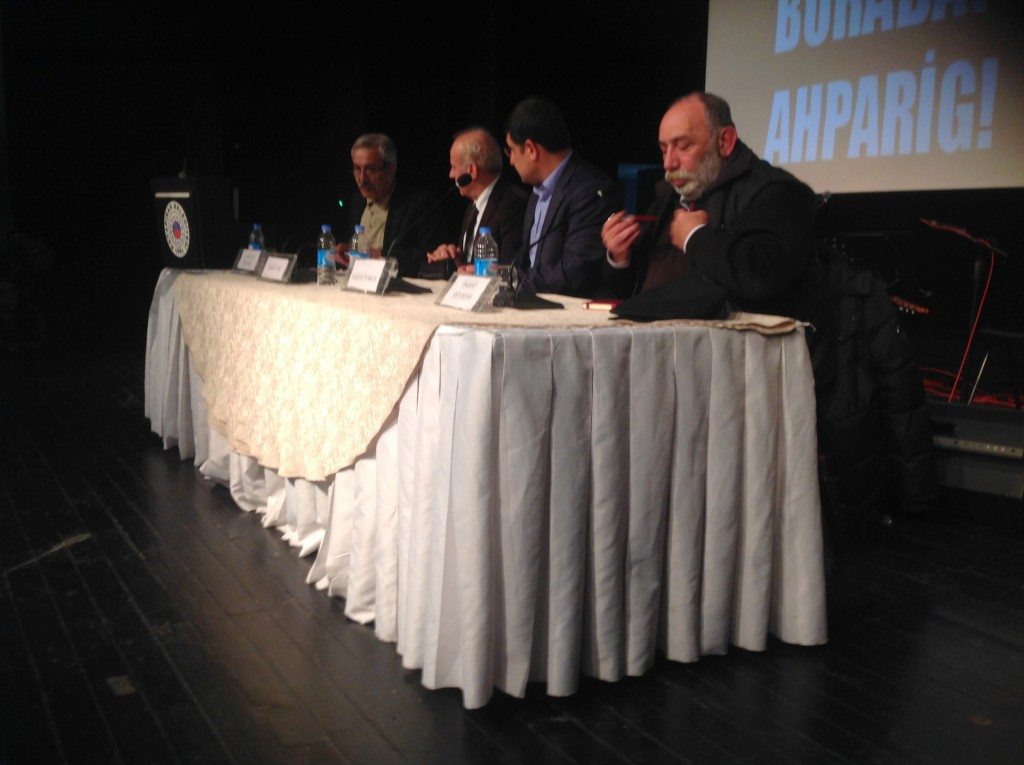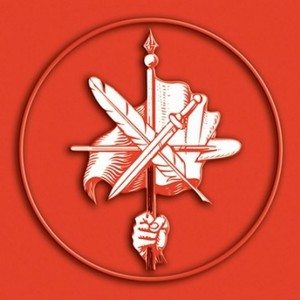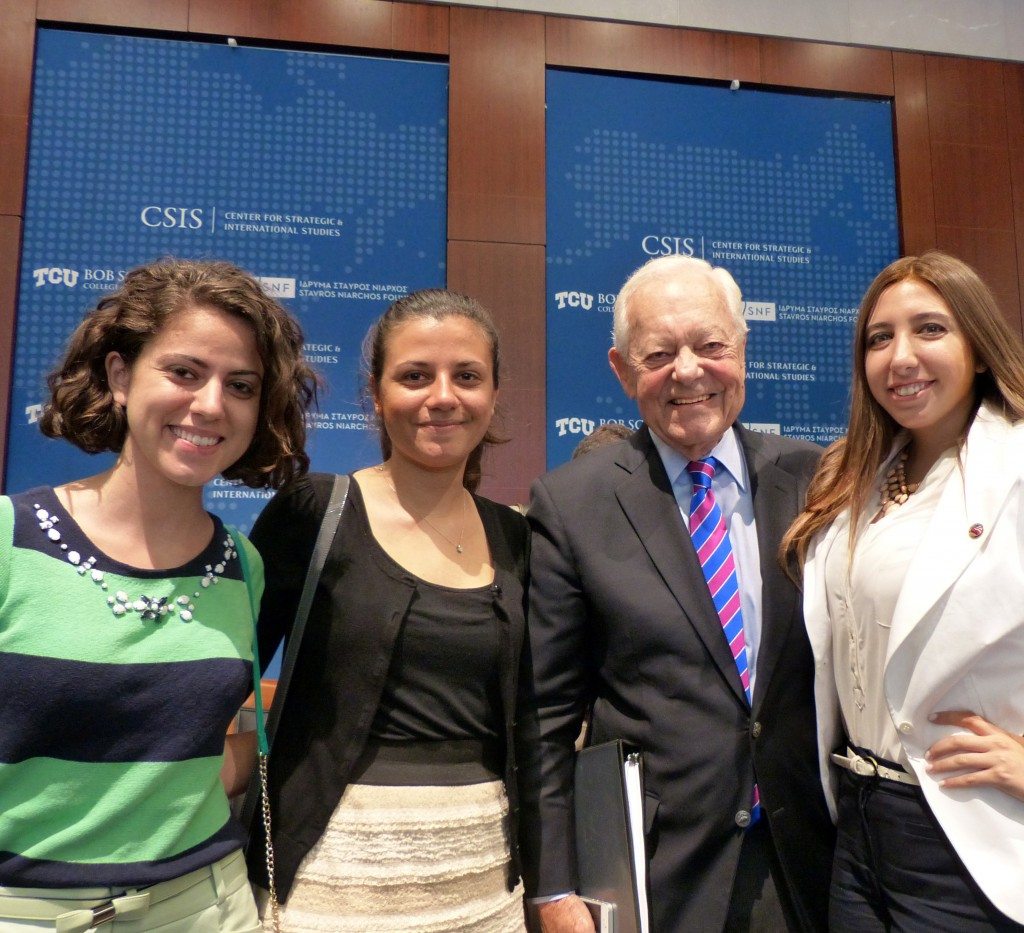
The ANCA Leo Sarkisian interns participated in lectures and meetings throughout D.C., including one at the Center for Strategic and International Studies (CSIS) moderated by veteran CBS News anchor Bob Schieffer. (L-R) Inna Mirzoyan, Alina Sarkissian, Schieffer, and Sevan Agopian.
The 2014 ANCA Leo Sarkisian Internship (LSI) brought together a stellar group of strong and bright Armenian women from top universities throughout the U.S. and Canada for an eight-week grassroots training session to advance Armenian-American community priorities and concerns—a Washington, D.C. boot camp for the Armenian Cause.
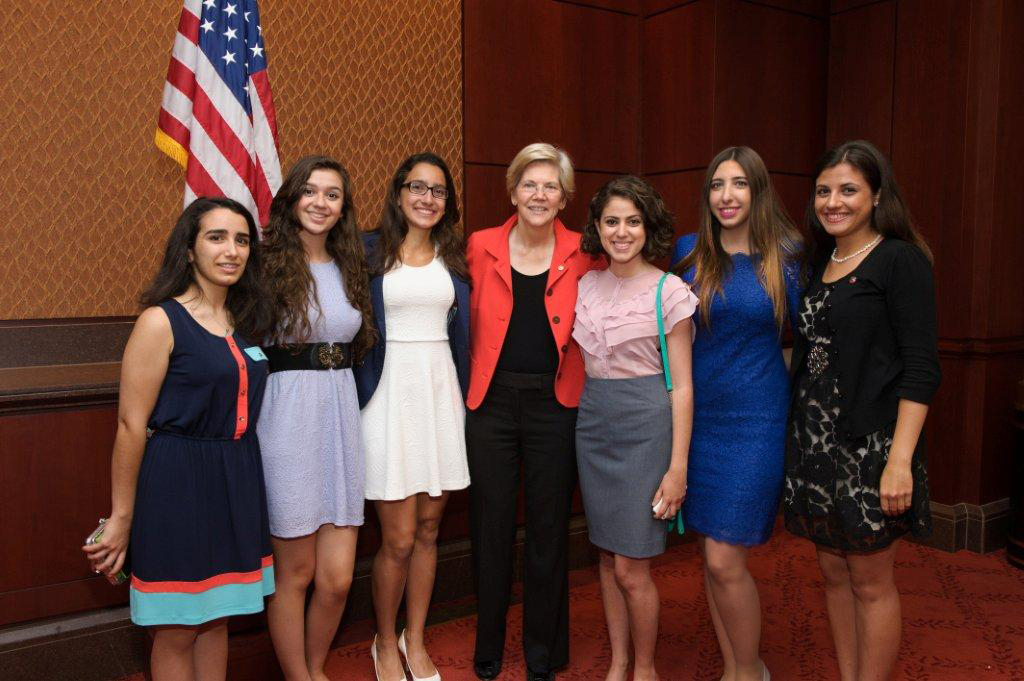
Massachusetts Senator Elizabeth Warren (D) with (L-R) Ani Chouldjian, Melanie Antanesian, Anahis Kechejian, Inna Mirzoyan, Sevan Agopian, and Alina Sarkissian
As we wrap up 2014, the ANCA interns take a moment to look back and share why they chose to participate in the program, what inspired them, and why fellow Armenian youth leaders should be applying for the 2015 summer session.
To learn more, and to download an application, visit http://www.anca.org/gateway.
***
Listening, Learning, and Taking Action in DC
By Anahis Kechejian
Northeastern University, Class of 2017
Back in March when I decided to spend my summer as a Leo Sarkisian Intern at the Armenian National Committee of America, I could not have anticipated what delightfully informative experiences the summer would have in store for me. As a voracious news consumer, I was excited by the prospect of meeting the newsmakers first-hand. This internship definitely delivered; during my stay I discussed issues with Senator Elizabeth Warren (D-Mass.) and Rep. Adam Schiff (D-Calif.), met Minority Leader Nancy Pelosi (D-Calif.), went to a POLITCO lunch where I saw the entire Cheney clan, and caught glimpses of Speaker John Boehner (R-Ohio), Rep. Paul Ryan (R-Wisc.), Rep. Michele Bachmann (R-Minn.), and Rep. Joseph Kennedy (D-Mass.), to name a few.
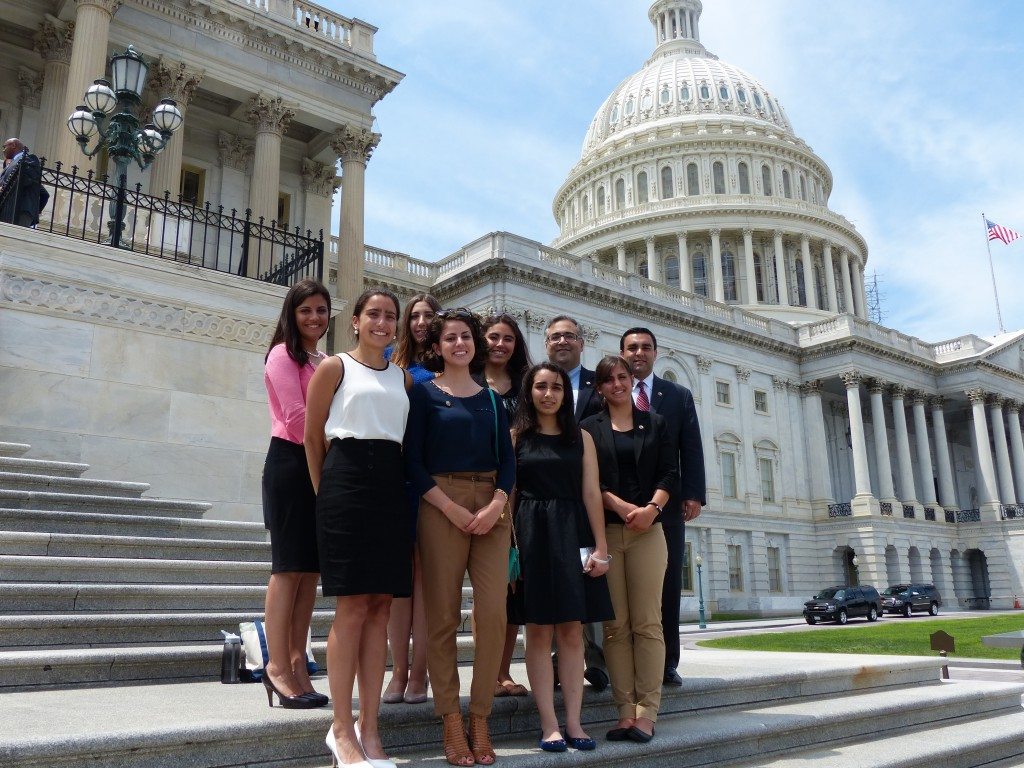
ANCA Leo Sarkisian interns and volunteers with Aram Hamparian, executive director, and Raffi Karakashian, legislative affairs director, during one of their many working visits to the Capitol.
I enjoyed traveling to Capitol Hill and witnessing how our political process works, and my inner Northeastern University spirit left Washington, D.C. with a deep found appreciation for all the hands-on experience I gained by working at the ANCA office.
Under the mentorship of ANCA Government Affairs Director Kate Nahapetian, fellow intern Alina Sarkissian and I dove headfirst into an extensive research project. We were tasked with determining the latest status on Christian properties in Turkey. Every day we asked ourselves, “In modern-day Turkey, what is it like to be a minority group?” As a science major, this type of work was completely novel territory. Reading through the State Department Report on “International Religious Freedom,” the Human Rights Report, and various news archives, I gained a thorough understanding of the current political climate in Turkey. I feel so blessed to have contributed to the growing body of evidence used by the ANCA to support our Hai Tahd agenda.
I am also very fortunate to have been close to Capitol Hill during an exciting time for Armenian-American politics. I was tasked with reporting on the Senate Foreign Relations Committee confirmation hearing of Ambassador-designate to Turkey John R. Bass. I became engrossed in the formal exchanges between Senators and ambassador appointees, particularly the heated back and forth between Sen. John McCain and Ambassador-designate Bass, who had to be pressed—repeatedly—to condemn Turkey’s restrictions on free speech, including the recent bans on YouTube and Twitter. This sudden eruption of passion is the reason people get hooked on politics.
Alina and I got a small dose of this excitement with our second project: managing the 2014 ANCA Congressional Candidate Questionnaire outreach campaign. We sent out questionnaires, wrote e-mails, made phone calls, and targeted specific primary races, all in an effort to find out the candidates’ stance on important Armenian-American issues. Our work led to better educating our community about the candidates running for Congress in their neighborhoods so that they can make more informed choices in the ballot box. Although there is little glamour in calling campaign offices, sending faxes, and embarking on the grueling journey that is “mail merge,” I returned to Boston with a new set of developed skills that can definitely be applied to work situations in the future.
Aside from doing things, there is value in listening. I joined Nahapetian at a meeting with Louisiana Congressman Bill Cassidy’s staff, discussing their concern areas where the Congressman and community can work together. Nahapetian was eloquent in her presentation—concise yet informative, direct yet articulate. There is an art to communicating foreign policy concerns effectively, a fact I have come to appreciate while in Washington. I never thought my science-oriented self would ever enjoy the nuances of foreign affairs. This internship handed me the perfect opportunity to embrace something completely outside my comfort zone. How could I pass up the chance to explore this major aspect of the Armenian Cause?
As an active member of the Armenian community, I felt it was important to understand Hai Tahd through a more matured and holistic lens. Between research on Turkey, sitting in on a State Department discussion on Syria, and interacting with the local Armenian community, I definitely feel inspired to further our Cause. The Leo Sarkisian Internship was the perfect impetus for taking that next step.
***
Armenian Women Belong in the House…and in the Senate
By Inna Mirzoyan
Michigan State University, Class of 2014
It started as a sunny day and followed by gloomy setting of rain, but the rally for the Equal Rights Amendment (ERA) initiated by Congresswoman Jackie Speier (D-Calif.) and Carolyn Maloney (D-N.Y.) did not lose any momentum on July 24, 2014. The weather that day symbolized the journey women in American history have endured. While women have accomplished many achievements, the ERA rally made it clear that unity is key to continuing the fight against work discrimination, limited healthcare options for contraceptives, and the rising sexual assault instances in addition to many other arenas where women still are not treated as equals.
Interning in Washington, D.C. as part of the ANCA Leo Sarkisian Internship Program gave this year’s participants—all women—the opportunity to add our collective voices to the rally, standing alongside Congresswoman Speier and equal rights advocacy groups such as the National Organization for Women (NOW) and the Feminist Majority Foundation (FMF). Earlier in the week, Congresswoman Speier had reached out asking if our ANCA LSI group would like to join in—and we were a unanimous “yes.” I was excited to get a chance to grab the microphone and say where we are from, in addition to noting that this year we were an all-female intern group. Women in Armenia have begun to raise their voices for equal rights and here in Washington—continents away—we were speaking in one voice.
Congresswoman Jackie Speier, a proud daughter of the Armenian nation, is an inspiration to me. She has been a leader on Armenian Genocide reaffirmation and education efforts since her days in the California State legislature. Since her election to Congress in 2008, Speier has continued to be outspoken on the full range of Armenian-American concerns.
But, on July 24, I saw a different side of Speier. The fact that women represent less than 20 percent of the U.S. House of Representatives clearly wasn’t slowing her down as she spoke passionately on the Supreme Court steps for women’s rights and social justice. Armenians have been fighting for justice throughout our history, from the struggle for an independent Armenia, to freedom for Artsakh, affirmation and reparations for the Armenian Genocide, and minority rights for our communities around the world. Women’s rights are just another sector of human rights that I have always believed in, and being an Armenian is one of the biggest reasons I feel so strongly about equality.
While at the ERA event, I learned the importance of public rallies. Gathering like-minded individuals in one place sparks a certain energy that is only strengthened when everyone agrees with each other. In this setting, I also learned how helpful coalition building is to facilitating such a movement. The organizers were happy to see women from all sections of society join in at the rally. The speakers focused a great deal on expanding the movement to encompass all aspects of society, including like-minded men. It’s a message I took to heart in expanding the Armenian cause. My fellow interns and I have been exploring ways we can expand coalitions on Armenian-American concerns—reaching out to human rights groups in advancing issues dealing with Artsakh self-determination; working with teachers regarding genocide education; teaming up with our Greek and Assyrian friends in the for the fight for the return of Turkey’s confiscated Christian holy sites. The coalition-building possibilities are endless; some are already being explored, and other avenues still need to tapped.
July 24 was an important teaching moment, coming to us straight from the steps of the Supreme Court, with Rep. Speier at the lead.
***
American Politics through the Eye of a Canadian
By Sevan Agopian
York University, Class of 2014
On my flight to Washington, D.C., I had one very clear goal in mind: learn as much as I can and cease every opportunity. Growing up with the strong influence of Hai Tahd, it was clear to me that the Leo Sarkisian Internship would be a perfect fit. Living in one of the greatest cities in the world, working with amazing leaders, and fighting for a cause which is my lifelong passion was the greatest reason for me to apply for the Leo Sarkisian Internship at the ANCA headquarters.
I constantly strive to learn more and take every opportunity so that I can be a leader and make a positive difference both in Vancouver and the Toronto AYF communities. Looking back at the eight weeks of being in one of the liveliest cities in the world, it’s difficult to choose one memorable highlight. However, it’s not until you actually step foot inside Capitol Hill, even as a Canadian, that you truly grasp the reality, struggle, and difficulties of the world of international politics today.
The Armenian National Committee has long been fighting for the Armenian Cause at both a state and international level. Their work may be different day to day, but the drive, commitment, and goals stay the same.
One would believe that being involved with the AYF (since I could walk) would have prepared me for the hearings on democracy in Turkey and on House Resolution 4347 (the “Turkey Christian Churches Accountability Act”), brunch with former Vice President Dick Cheney, protesting with Congresswoman Jackie Speier and Carolyn Maloney on the Equal Rights Amendment, or witnessing Sen. John McCain pressuring the Turkish ambassador nominee. I have learned that as a Canadian, supporting the mission of the Armenian National Committee of America, it’s important to understand and immerse yourself in the field of public policy. Working with the ANCA truly showed me the amount of dedication and activism it takes to simply bring our issues to Congress. In order to pass H.R. 4347, we had to ensure that all possible constituents had reached out to their Members of Congress in support of the bill. Educating and motivating both policy-makers and citizens is just half of the work that goes on behind the scenes at the ANCA office, which is extraordinary to be a part of, no matter your citizenship.
As a Canadian being immersed in the heart of American politics, it was interesting to see how different Representatives addressed the topic of genocide on Capitol Hill. Congressman Albio Sires (D-N.J.) referred to genocide perpetrators as “thugs” during the House Foreign Affairs Subcommittee meeting on human rights in Turkey. Congressman Chris Smith (R-N.J.) slammed on the desk in frustration as he recounted a threat made by a former Turkish ambassador if the U.S. were to recognize the Armenian Genocide, during a hearing that Smith chaired. We could feel the intensity that filled the room.
And then there were Members of Congress like Turkey Caucus Co-Chair Gerry Connolly (D-Va.) and Gregory Meeks (D-N.Y.) essentially whitewashing Turkey’s human rights record. Listening to each of these House Members, you get a real sense of how far we have come as a community in advancing truth—and the hurdles we have yet to overcome.
Though the eight-week long internship may be done, the cause and movement never ends. I left D.C. with a more open and clear mind about why the candle to signify our cause will and must never die. We need to keep the fire lit and strong as we continue to fight, educate and advocate for justice for generations to come.
***
The Second Army of the Armenian Nation
By Tamar Anna Alexanian
Vanderbilt University, Class of 2016
One afternoon, while working on my individual project as an ANCA Leo Sarkisian Intern, Yeghisapet Chouldjian, the communications director at the ANCA office, turned to me and said, “Let’s add the phrase ‘second army of the Armenian Nation.’ People refer to the ANCA in that way.” I added it to the document I was working on and moved on to the next page of editing.
A week or so later, I was still reflecting on this phrase. The more I thought about it, the more it struck me as absolutely accurate. The staff here at the office acts as the leadership—the generals, the captains—for this so-called army. Some days we get here as the sun is coming up and are here long after the sun has set; some afternoons are spent sweating profusely on the steps of Capitol Hill at a protest; some days, the office receives a hasty phone call and, with barely any notice, we have to be ready to head out, notepads, pens, and paperwork clutched in hand.
I have been incredibly fortunate to learn from these leaders—as a student, an intern, an Armenian, an American, and a warrior in this second army for the Armenian Nation. The most profound lesson that these leaders have taught me is the lesson of humility. In an office with only a handful of full-time staff members, everyone has to pitch in to make things work. Everyone washes dishes, everyone makes the coffee, and everyone hides messy-looking paperwork in empty drawers before company comes to the office. In the same vein of thought, the Leo Sarkisian Interns have been asked to act in the same manner, held to the same standard. When we dirty dishes, we must wash them; when we spill something, we must clean it. But I expected that when I came to Washington, D.C. (or anywhere, I suppose).
What came as a surprise was the amount of responsibility that we were given. When there was a vote in the House of Representatives for the Turkey Christian Churches Accountability Act, we called hundreds of constituents to ask for their support; when we needed PR work done for the office, we started posting on various social media sites; when Congressmen needed—and still need—to be held accountable, we went through a year of Armenian newspapers and sent them copies to show that Armenians, indeed, care about what they do.
Unlike any other internship I would have applied for this summer, I did not spend my time getting Starbucks coffee for my boss or making endless amounts of copies in the backroom. Instead, I trained to be a leader—a warrior—for my people, under the guidance and leadership of the most dedicated and most inspirational generals.
The leaders here march to the rhythm of Capitol Hill, but, if you listen closely, the songs of our homeland can be heard between the beats. They encourage and inspire me—and all of us—to march to this rhythm, to march beside them, but to always listen for the underlying melody.
***
A Look Back: The Journey of an ANCA Intern
By Alina Sarkissian
California State University, Northridge, Class of 2015
Every summer, the ANCA welcomes a select group of college students to intern at its headquarters in Washington, D.C. The students come from different backgrounds, geographically, but share the same purpose—the pursuit of Hai Tahd. The internship program is an opportunity to witness the work that goes into successfully translating the Armenian plight into legislation that the United States federal government will fully support and aid. From creating social media campaigns to meeting with Members of Congress about the situation in Artsakh, the ANCA does it all—and for eight short weeks, the Leo Sarkisian Interns get to work side-by-side with their superiors to see how it all gets done.
When I first heard about this internship, I was sitting in my ice-cold dormitory (the building’s air-conditioning system was stuck at an arctic temperature that day) on a humid June evening at the University of Maryland, College Park. The university was hosting the 2013 National Conference for College Women Student Leaders, and I had just concluded my presentation at the conference on behalf of my college, California State University, Northridge. The sentimentality of the moment had ignited a surge of passion, excitement, and resolve in me, and I made a promise to myself that evening to utilize these emotions towards benefiting my community in Glendale.
Two months later, I was accepted into the internship program at the Western Region office of the Armenian National Committee, and exactly one year later, I found myself on a plane to Washington, D.C., ready to begin my journey with the ANCA’s LSI program. It was a journey that would provide me with lifelong friends, skill sets I could tailor towards benefiting my career, and an abundance of joyous memories.
This year’s LSI class was especially lucky. From day one of the internship, we were immersed in political events that allowed us to participate in federal committee hearings and in meetings with numerous Members of Congress. One of the highlights of this eight-week experience in D.C. was witnessing the United States House Committee on Foreign Affairs discuss and vote for the passage of H.R. 4347, or the “Turkey Christian Churches Accountability Act.” My knowledge of the federal legislative system amplified after attending related hearings for that bill, and I also gained a newfound respect for certain Congressmen who work across the aisle of where my political beliefs lie. The experience has reminded me once more of the importance of unification. Change for the Armenian-American community will only occur if our voices collectively demand for it from both sides of the aisle.
Through the LSI program, young Armenian adults from widely different backgrounds are brought together to enhance themselves on a professional and altruistic level. While we engaged in Hai Tahd, we were also submerged in a string of lectures to help us improve our qualities as a community leader. I truly enjoyed having the chance to converse and brainstorm with Ken Hachikian, the chairman of the ANCA, about how we could help our respective Armenian communities once the internship ended. As the president of the CSUN Armenian Students Association—arguably one of the largest ASAs in the country—and an active member of the All-Armenian Students Association for the past two years, I am constantly challenged by the thought of how to encourage more involvement in the young adults around me. Hachikian worked with me on creating an outline of strategies and tips on how to lessen this problem, and I look forward to translating that experience into a presentation I can give to other ASAs in Southern California.
The summer of 2014 was certainly one of my greatest ever, but there was one reason for that, above everything else. I learned that, in the grandesque, controversial, and deliciously frenzied city of Washington, D.C., a little Armenia had been born. Thanks to the efforts of Aram Hamparian, Elizabeth Chouldjian, Kate Nahapetian, and Raffi Karakashian, I was able to absorb inspiration and hope for the Armenian Cause. They are four of the most humble and hard-working Armenian Americans I have ever met, and they also introduced me to the other incredible Armenians who are tirelessly fighting for the same cause all around the country. For eight weeks, I was granted the privilege of working with some of the most dedicated Armenian leaders in the country. I also gained friendships with some of the other interns in the office that I know will last for the rest of my life. Regardless of where life takes me in my travels, I will strive to grow as an openhearted, passionate leader for my homeland and for my people.
***
Standing with Artsakh
By Ani S. Chouldjian
Lowell High School, Class of 2017
This summer I interned at the ANCA where I was able to see first-hand how the ANCA and the Armenian-American community work together to advance our cause. I am still in high school, so I wasn’t eligible for the ANCA Leo Sarkisian Internship (just yet), but the interns were a wonderful group of strong and bright women—and they were kind enough to adopt me as one of their own during my stay in D.C.
It was a great experience overall, where I learned many new things, especially about the Nagorno Karabagh Republic (Artsakh) and its efforts to grow a strong democracy and economy, despite Azerbaijan’s constant threats and attacks.
One of the projects I was tasked with was preparing a student resource guide for high school students about Artsakh. Exactly one day after finishing the document, on July 31, word came in about the devastating attack on the Artsakh-Azerbaijan border that resulted in the death of two of our army officers: Ashot Asoyan and Ararat Khanoyan, both in their 20s. The two were holding off Azerbaijani troops until reinforcements came to repel the attack, and gave their lives to hold the line.
A day later, on Aug. 1, the Azerbaijani forces attacked again. This time the Artsakh soldiers counterattacked and were able to protect themselves. In the end, between the 2 incidents, there were 16 casualties (2 Armenian and 14 Azerbaijani) and 30 people injured—the worst fighting since the ceasefire in 1994.
In the face of these attacks, the international response was frustrating and disappointing, particularly seeing the Organization for Security and Cooperation in Europe (OSCE) Minsk Group unfairly blaming both Artsakh and Azerbaijan for the attacks, basically letting Azerbaijan off the hook. According to the OSCE Minsk Group, they are not blaming Azerbaijan alone because they want to be fair to all sides. I think Azerbaijan’s oil resources have more to do with their decision.
The most important thing I learned at the ANCA is how they deal with big crises like these terrible attacks on Artsakh. As soon as the news came through, they reached out to the OSCE’s U.S. representative, Ambassador James Warlick, warning that the OSCE’s inaction could lead to more fighting and, possibly, full-scale war. Then the ANCA rallied our community to send letters to the OSCE Minsk Group urging them to publicly call on Azerbaijan to stop the attacks on Karabagh and Armenia. So many people participated—sending e-mails, making phone calls, using Twitter and Facebook—and with each step made our community’s appeal stronger.
The bond between the ANCA and the Armenian community is extremely important to move the Armenian Cause forward—and this grassroots efforts in support of Artsakh was a great example of that. I went home not only with a better understanding of Armenia, Artsakh, and broader issues, but also of how the U.S. government and democracy work, and our role—my role—in shaping our collective future.
The post The DC Life: ANCA Leo Sarkisian Interns Look Back at a Summer of Commitment to Cause and Community appeared first on Armenian Weekly.
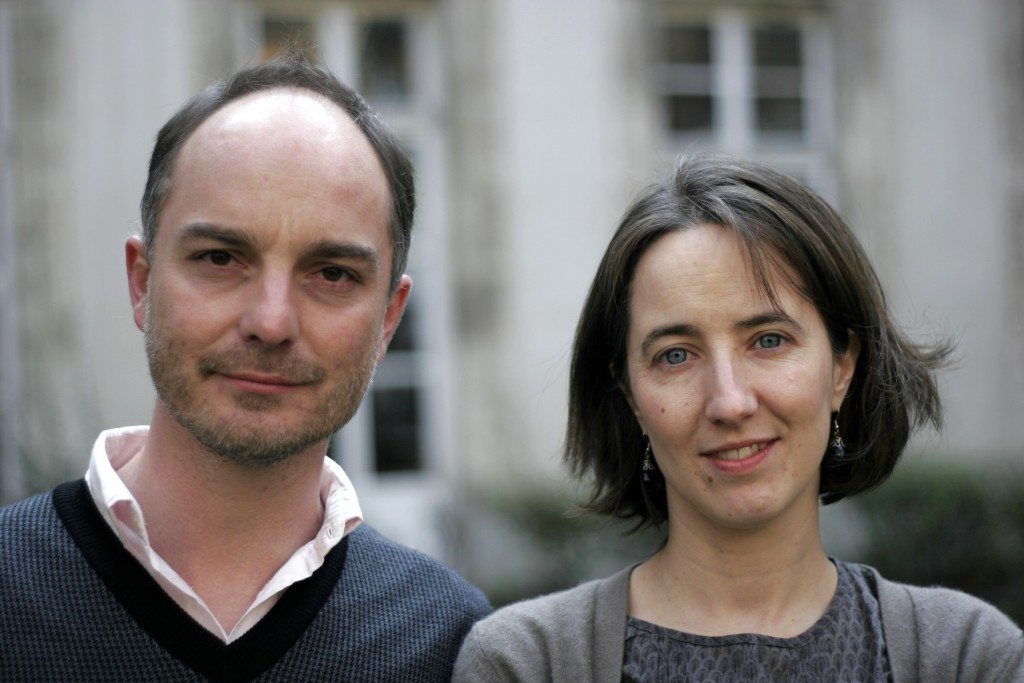
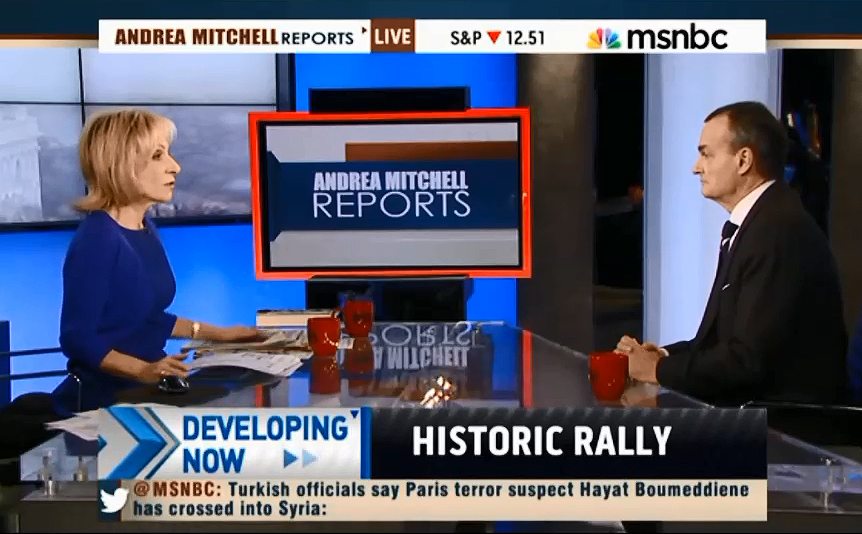
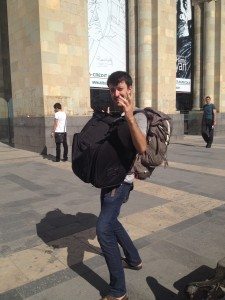

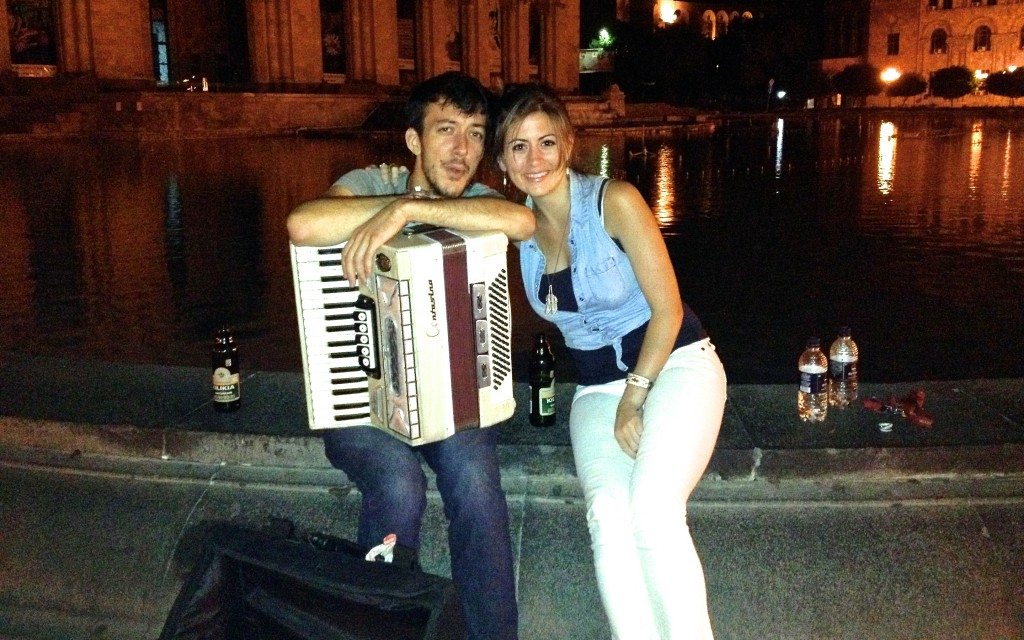

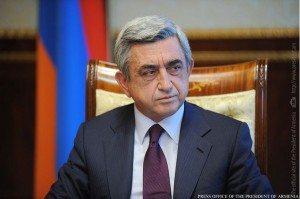
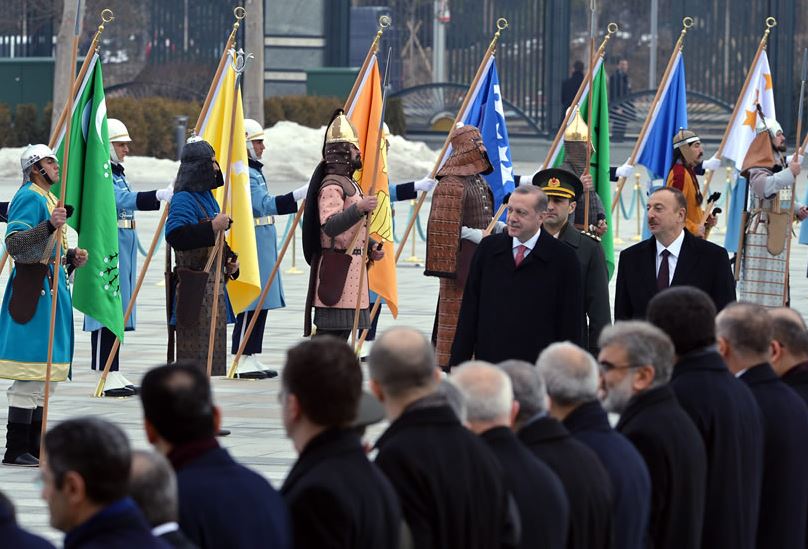





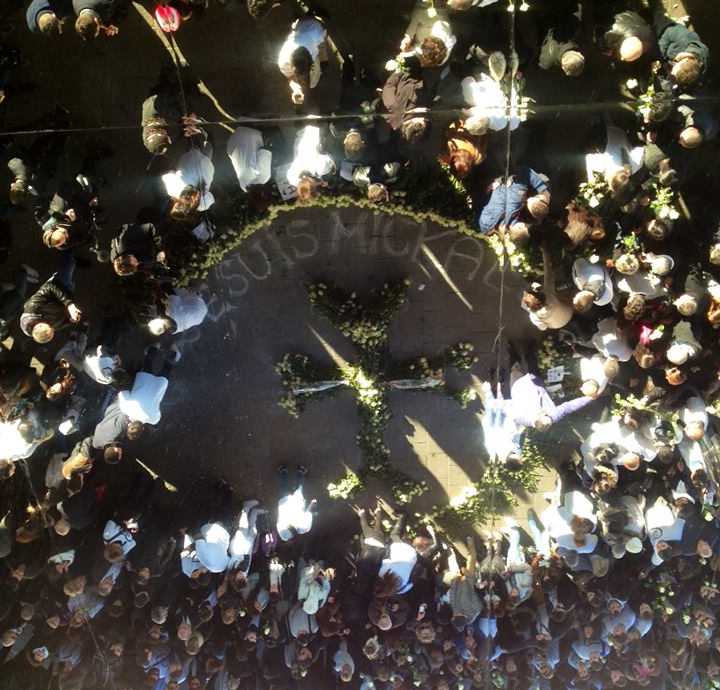
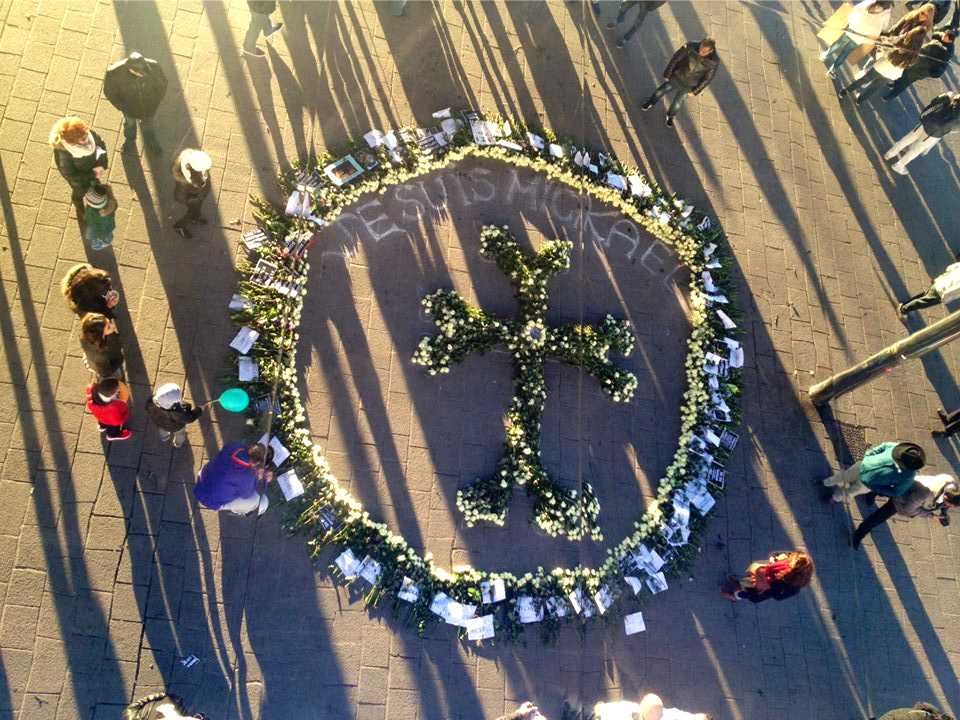


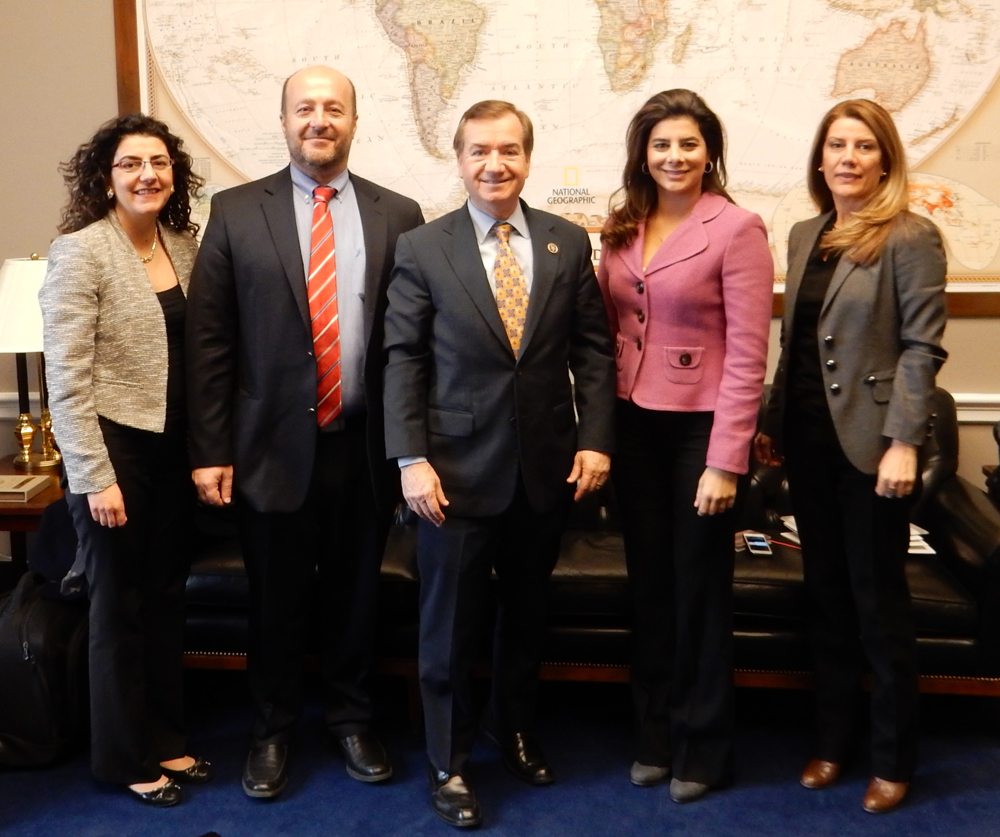
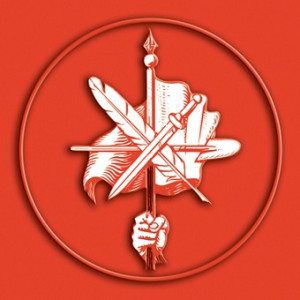

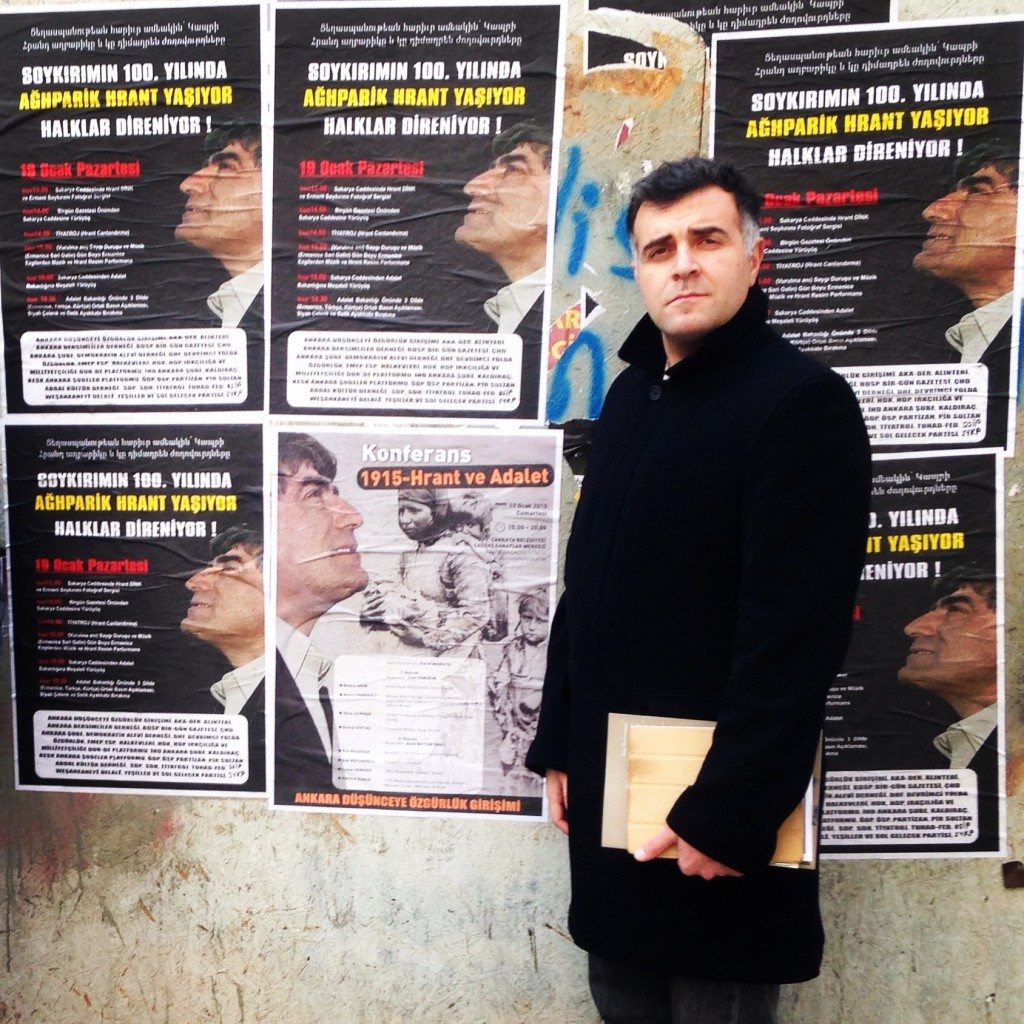
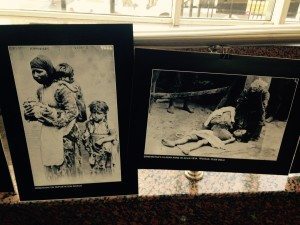
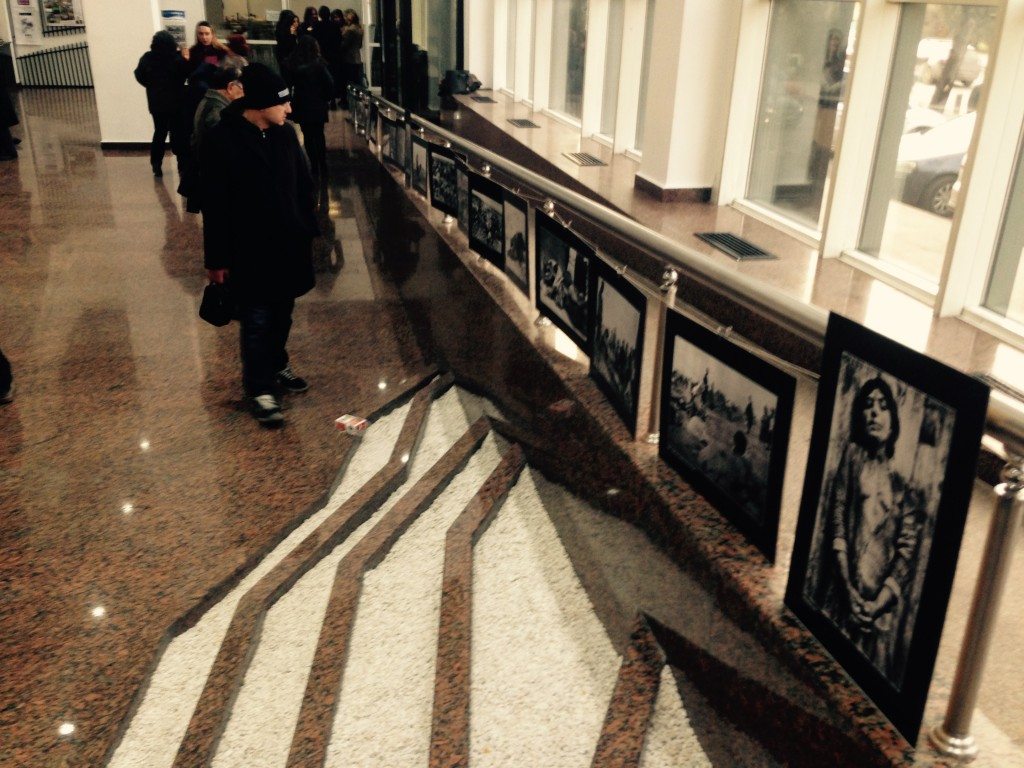
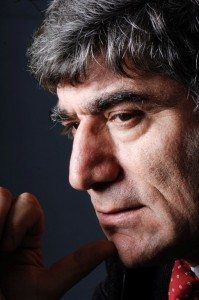
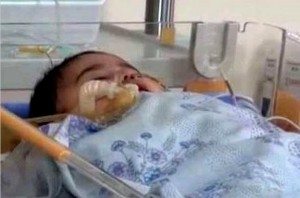
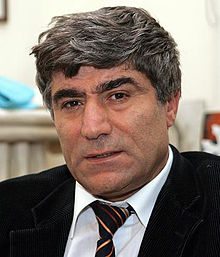
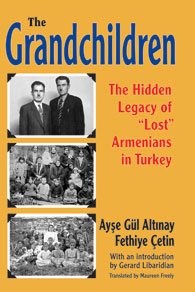
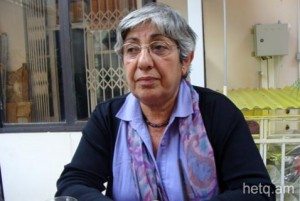
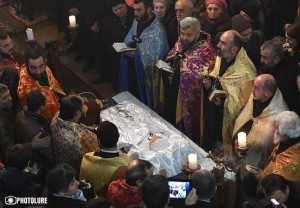
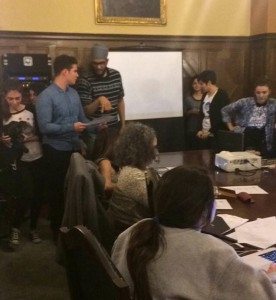
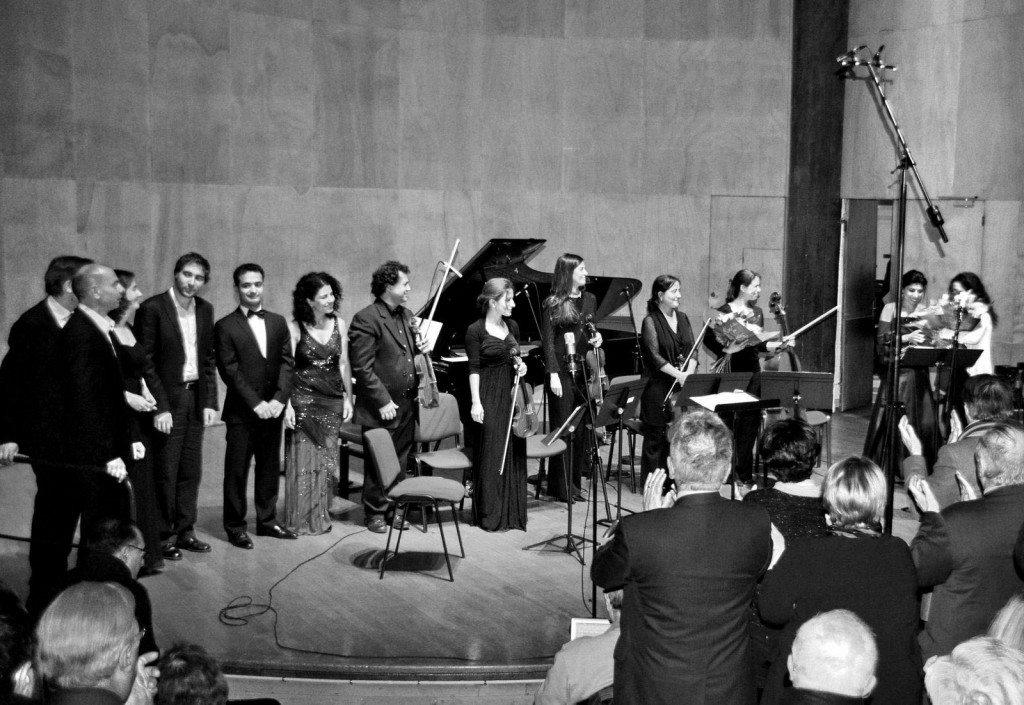
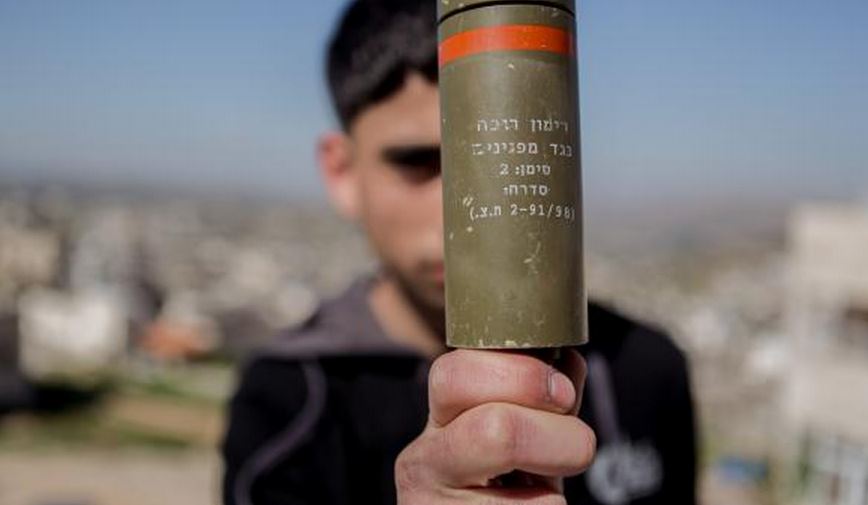

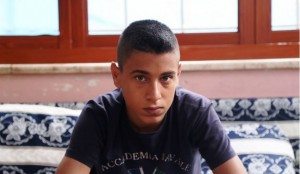
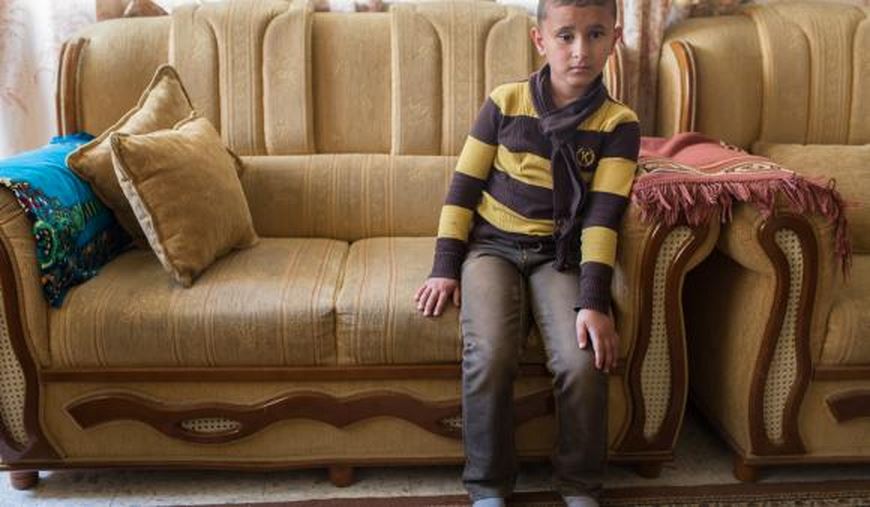

![‘ATP [plants trees to] prevent erosion of the soil. Is it also, in a way, helping to fight the erosion of a nation?’ (Photo by Kerry Brett)](http://armenianweekly.com/wp-content/uploads/2015/01/ATP-David-Alpay-300x218.jpg)
